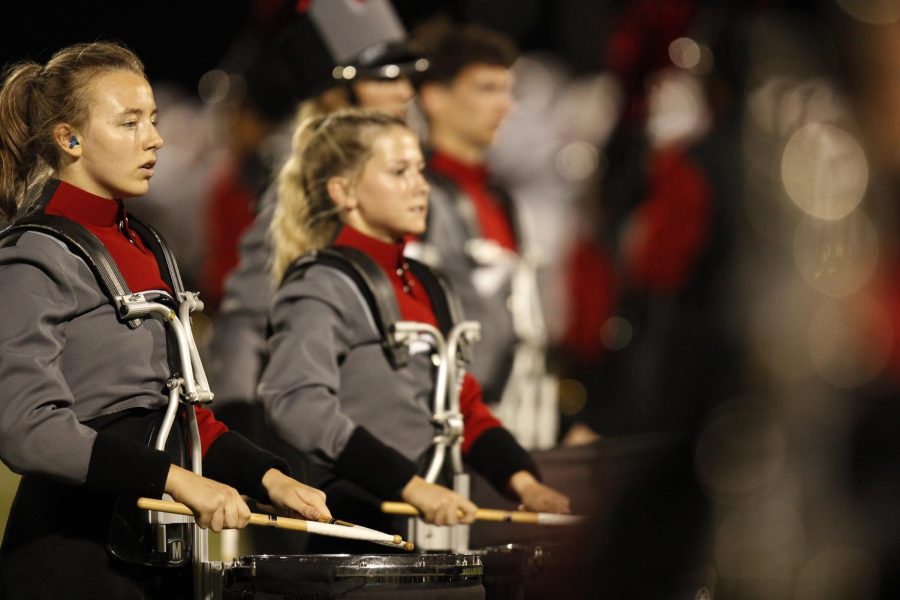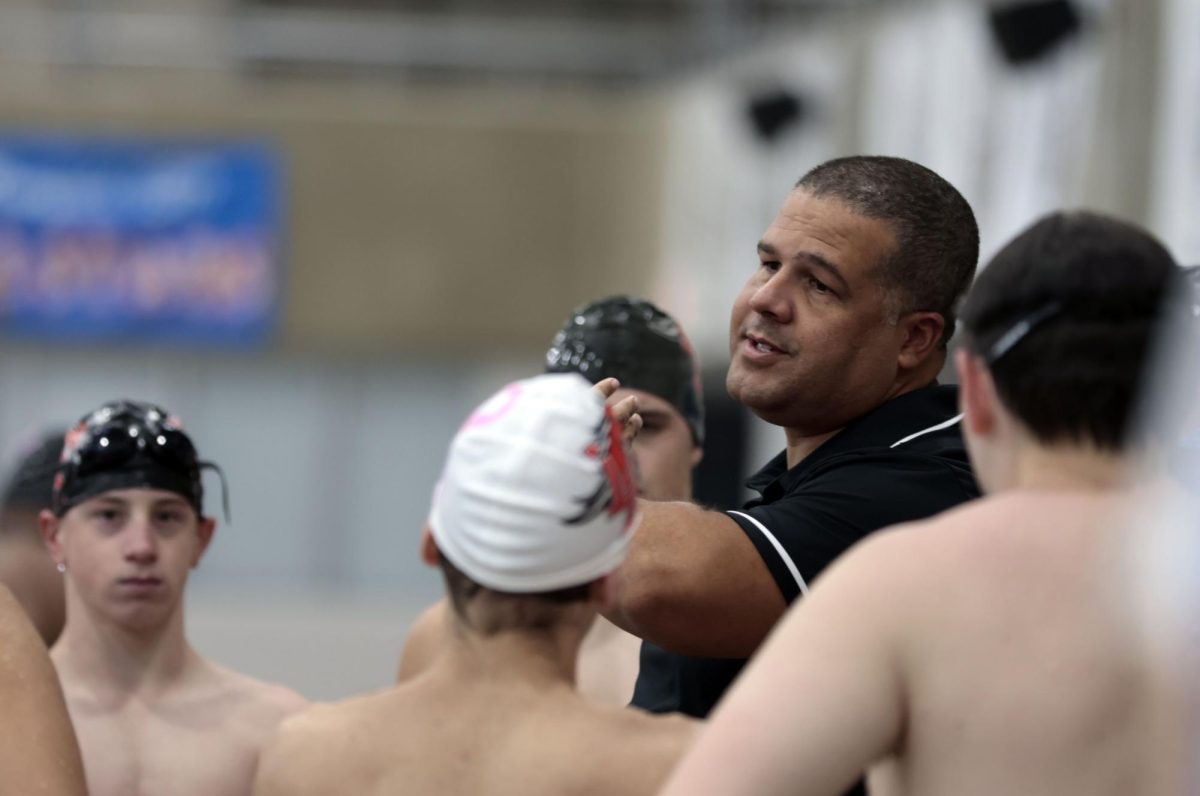Drummers throw their arms down after the last hit and finally exhale. Focus floods back in as the band concludes their piece and bright light shines on their instruments.
“The hardest part about marching season is the time commitment and how it fits into my larger schedule,” senior Caroline Norris said. “It takes up almost all of my afterschool time and half of my weekends, so it makes doing homework and getting enough sleep very difficult.”
In sixth grade, Norris began band at Donna Shepherd Intermediate School after encouragement from her family. Since then, she has played the snare drum in percussion for six years, joined drumline, and with her section has been recognized in competition and awarded Outstanding Percussion.
“It’s considered among percussionists to be the hardest instrument hierarchically,” Norris said. “But I think they’re all hard in their own way, and they’re all important.”
Musicians often find the snare more difficult within percussion, as the drummer is expected to play in sync with their surrounding musicians, and cannot be offbeat even by a slight note.
“The main focus is rhythms and we kind of add from there. We add roles and accents,” Norris said. “Our main job is just to keep time for the band.”
The different sections of the band differ in their methods and learning styles during performances, so when one class of instrument joins with another, they have to merge both process and signals for the final piece. Mia Warren, a senior clarinet player, has worked with percussionists and finds the difference in practice to be stark compared to her own section.
“[Percussion] is so much harder,” Warren said. “Usually [we focus on] phrasing and dynamics.”
All sections understand the timeline of their music in their own way according to their instrument and the process to play it. Within percussion, they tend to understand and focus on what the end goal is.
“Everyone has an understanding of everyone else’s part,” Norris said. “While playing alongside the band is much more separate, the band doesn’t fully know what we’re doing and vice versa.”
Within the front ensemble, alternatively called the pit, musicians play mallet instruments, similar to piano, as well as other accessories that add effect to the show.
“A lot of people think drumline is harder than ensemble, but it’s not,” Norris said.
Within drumline, drummers rehearse every day, both in and outside of school to perfect their techniques over marching, understanding the show music and stand tunes and the cadence of the piece they’re playing.
“Drumline is a much more driven atmosphere, [while] percussion during concert season is much more laid back and focuses on adding embellishments to the bands music,” Norris said.
In marching band, almost all instruments are played alongside each other whilst marching a formation. Players rehearse throughout July until the beginning of school to perfect their movement and skill.
“It’s nice to see that I wasn’t the only one who knew how much work I was putting in. It’s nice to know other people see your efforts,” Norris said.
Although she enjoys her position with the snare, Norris would eventually like to expand her skillset with other percussion instruments.
“I would choose to play vibraphone,” Norris said. “I like the way it sounds and it’s easier than other front ensemble instruments. I feel like I’m not at that playing level. You’ve got to ease into it.”






















